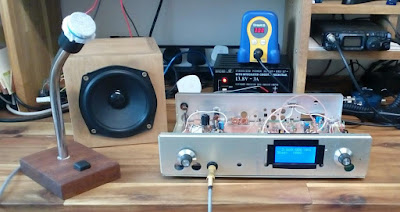 |
| M0KOV's BITX |
Dilbert's mother took him to the doctor because of ham radio. Jean Shepherd's date said that Shep's mother should "take him to a doctor" (he was obsessing over his Heising modulator.) And now we learn that Steve M0KOV was hauled into the doctor's office because of his "obsession with electronics." You are in good company Steve. The Knack diagnosis is confirmed.
From Steve M0KOV:
Just watched young Dilbert at the doctor's surgery.
Although I was late getting my ham licence, I'm sure that I fit the standard knack victim mould. I built my first radio at the age of 10 and even before then I preferred to be bought batteries, switches and lamps rather than sweets. Within a couple of years my small bedroom comprised of a bed, somewhere to throw my clothes and an electronics work bench. The bench and floor were completely covered with half built electronic projects, ex military radios, tools, my beloved old Heathkit oscilloscope and the rest.
Now, my true Dilbert moment. I remember being in the family doctors surgery and my mother was discussing my inability to get to sleep (a perfectly normal ailment for a 13 year old male). She was voicing her concern that it might be my obsession with electronics, and it was all going round in my head and keeping me awake. Funny, later in my life she never seemed to be bothered if the worry of studying or exams kept me awake.
Thanks for another great podcast.
73 de Steve M0KOV




